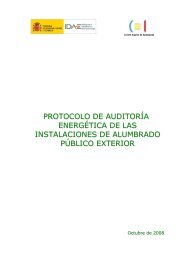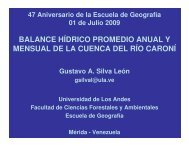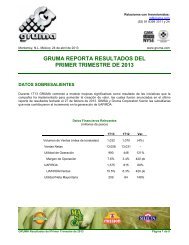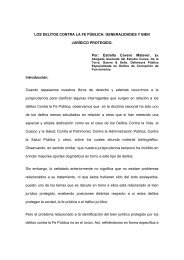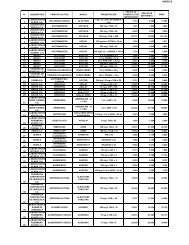broschuere ee zahlen en bf
broschuere ee zahlen en bf
broschuere ee zahlen en bf
You also want an ePaper? Increase the reach of your titles
YUMPU automatically turns print PDFs into web optimized ePapers that Google loves.
ANNEx: METhODOLOGICAL NOTES<br />
100 R<strong>en</strong>ewable Energy Sources in Figures<br />
4. Calculating avoidance factors and avoided emissions for r<strong>en</strong>ewablesbased<br />
heat g<strong>en</strong>eration<br />
The emissions of gr<strong>ee</strong>nhouse gases and air pollutants that are avoided by using r<strong>en</strong>ewable<br />
<strong>en</strong>ergy in the heat sector are calculated in thr<strong>ee</strong> stages:<br />
First, the substitution factors are determined for each of the r<strong>en</strong>ewable heat supply paths.<br />
These indicate which fossil primary and also secondary <strong>en</strong>ergy sources such as district heating<br />
or electricity would have to take over the r<strong>en</strong>ewable heat supply if the latter were not<br />
available. Important information for this purpose is provided by the findings of an empirical<br />
survey on the use of solar thermal <strong>en</strong>ergy, heat pumps and wood-burning systems in private<br />
households [87]. Use was also made of information from the Working Group on Energy Balances<br />
(AGEB) on <strong>en</strong>ergy consumption by the sectors: processing of mined and quarried products,<br />
the paper industry, and other industries (including timber industry) and private households.<br />
In the case of supplies of r<strong>en</strong>ewable district and local heating from wood, biog<strong>en</strong>ic<br />
compon<strong>en</strong>ts of waste and geothermal <strong>en</strong>ergy, it is assumed that these are a 100 % substitute<br />
for fossil district heating and that the distribution losses are comparable.<br />
In a second step, emission factors for r<strong>en</strong>ewable heat supplies in private households, agriculture<br />
and industry, and also for the relevant savings in fossil heat supplies, are tak<strong>en</strong> from or<br />
deduced from UBA [92], Öko-Institut [90], Ecoinv<strong>en</strong>t [84], Vogt et al. [89], Ciroth [83], Frick et<br />
al. [86]. The emission factors used take account of the <strong>en</strong>tire upstream chain for supplies of<br />
fossil and r<strong>en</strong>ewable <strong>en</strong>ergy sources. In the case of combined heat-and-power g<strong>en</strong>eration, allocation<br />
to heat and power is in accordance with the “Finnish method” laid down in EU<br />
Directive 2004/8/EC.<br />
In the final step, the fossil emissions avoided are compared with the emissions arising from<br />
the use of r<strong>en</strong>ewables to determine the net avoidance of gr<strong>ee</strong>nhouse gases and air pollutants.<br />
Detailed information on the calculation methods and data sources can be found in UBA [75].<br />
Substitution factors for r<strong>en</strong>ewablesbased heat<br />
Heating oil Natural gas Hard coal lignite District heat Elec. heating<br />
[%]<br />
Wood – stand-alone stoves (hh) 41 50 0 1 2 6<br />
Wood – c<strong>en</strong>tral heating systems (hh) 65 20 2 3 0 10<br />
Solid biomass (industry) 13 54 10 14 9 0<br />
Solid biomass (hP/ChP) 0 0 0 0 100 0<br />
Liquid biomass (industry) 7 67 10 3 13 0<br />
Liquid biomass (hh) 29 51 1 1 9 9<br />
Biogas, sewage gas, landfill gas (BChP) 58 37 5 0 0 0<br />
Biog<strong>en</strong>ic fraction of waste (hP/ChP) 0 0 0 0 100 0<br />
D<strong>ee</strong>p geothermal <strong>en</strong>ergy (hP/ChP) 0 0 0 0 100 0<br />
Solar thermal <strong>en</strong>ergy (hh) 45 51 0 0 1 3<br />
heat pumps (hh) 45 44 1 2 5 3<br />
Total 35 38 3 3 17 4<br />
Sources: UBA [75], [92] on the basis of AGEE-Stat and Frondel et al. [87]; AGEB [2], [4]




